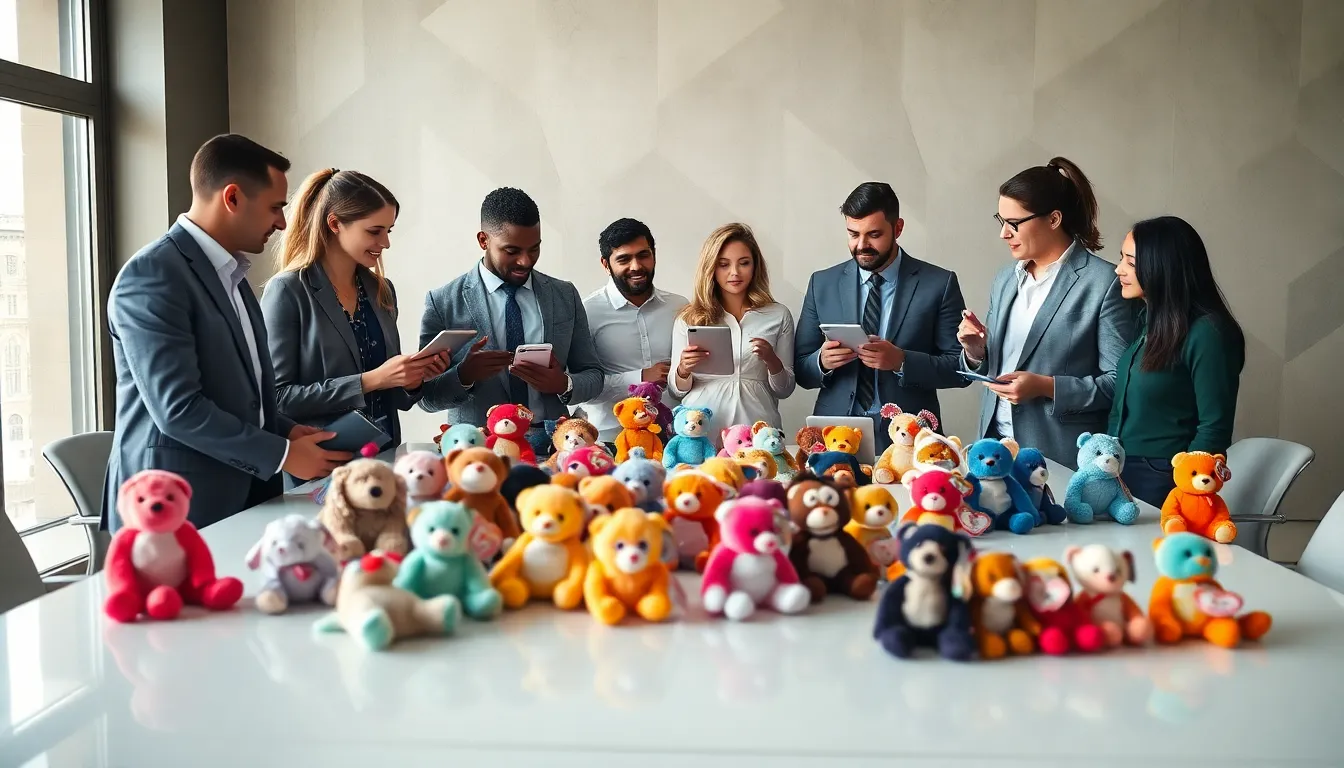Picture this: a dusty attic filled with memorabilia from the ’90s. Amidst the old toys and college textbooks, a treasure trove of Beanie Babies lurks. But the real question is, how much are these plush critters worth now? It’s a wild ride through nostalgia and financial speculation, where some collectors have struck gold while others have just ended up with plush pets. Strap in and let’s explore the worth of these tiny, bean-filled wonders and discover if you’ve unwittingly become a plush millionaire.
Table of Contents
ToggleThe History of Beanie Babies

Beanie Babies made their debut in 1993, thanks to the creative genius of Ty Warner. Initially, these charming little toys didn’t attract much attention. But, it didn’t take long for them to become a whirlwind of craze. Ty Warner introduced the concept of limited editions, and suddenly consumers could not resist collecting every type.
The craze peaked in the late ’90s, when people camped outside stores for the latest releases. For many enthusiasts, collecting Beanie Babies was more than a hobby: it became a lifestyle. But as quickly as the hype soared, it crashed into a valley around 1999. Many investors were left questioning if their plush pals had lost value or, worse, become mere dust collectors.
Notably, some Beanie Babies sold for thousands of dollars at peak prices, placing them squarely in the collector’s market. Today, their history shapes their value, as rarity and condition play a crucial role in what collectors are willing to pay.
Factors Influencing Beanie Baby Value
Understanding the value of Beanie Babies requires a keen eye on several critical factors. First, rarity is crucial. Limited editions or those produced in fewer numbers typically command higher prices. A Beanie Baby that was part of a short run may sometimes sell for thousands.
Next, condition plays a significant role. Mint condition Beanie Babies, those kept in their original packaging and in pristine shape, tend to fetch the highest prices. Collectors want toys that look as good as new.
Then, knowing the tags is essential. Many Beanie Babies possess two tags, a hang tag and a tush tag. Variations and errors in these tags can significantly influence value. For instance, Beanie Babies with misspelled names or incorrect information are often more sought after.
Finally, market demand fluctuates. While some Beanie Babies are perennial favorites, others may have a peak moment and fade away. Keeping an eye on current trends can provide insight into who’s willing to pay top dollar.
Popular Beanie Babies and Their Worth
Some Beanie Babies are legends in the collecting community. Take ‘Princess Bear,’ for example, introduced to honor Princess Diana. Due to its limited release and charitable tie, it is one of the most coveted Beanie Babies, worth upwards of $5000.
Another popular figure is ‘Peanut the Elephant.’ This classic plush debuted in 1994, and its original versions with the blue and pink color scheme can fetch several thousand dollars in mint condition.
Also, ‘Gobles’ the bear, which features a unique pattern, is highly sought after, often selling for several hundred dollars depending on its condition and tag variations. Many collectors find that investing in these iconic critters can yield surprising returns.
How to Determine the Value of Your Beanie Babies
Determining the value of Beanie Babies can be a fun yet challenging job. Start by doing some research. Websites and online marketplaces offer valuable insights into current selling prices. Sites like eBay often showcase actual sale prices, allowing collectors to gauge what buyers are currently paying.
Next, consult price guides and collector clubs to find comprehensive lists. These can provide valuable context when appraising your stash. You may also consider getting your Beanie Babies appraised by a professional. Such experts often have a wealth of knowledge and can offer insights that might go unnoticed in a simple search.
Finally, keep condition in mind: a Beanie Baby’s worth can dramatically shift based on how well it has been preserved. Taking these steps ensures a well-rounded understanding of your collection’s potential value.
Selling Your Beanie Babies: Tips and Best Practices
For anyone looking to sell Beanie Babies, understanding the best practices can make a massive difference. Start by cleaning them gently. Ensure they are not damaged, but avoid excessive cleaning that could lower their value.
Next, take high-quality pictures of each Beanie Baby. Potential buyers want to see a clear view of the item, including tag details and any notable features. Transparency is key. If there’s a flaw, disclose it honestly to potential buyers.
When it comes to pricing, be realistic. While it’s tempting to inflate prices based on nostalgia, researching market trends helps in setting a fair price that attracts buyers. Consider different selling platforms, local marketplaces, social media, and dedicated auction sites each offer unique advantages.
Finally, ensure you have a good communication strategy. Responding quickly and courteously to inquiries can set your listing apart and encourage sales.
Current Market Trends for Beanie Babies
The Beanie Baby market has evolved significantly since its heyday. Many collectors now view them not just as toys, but as investments. Recently, a resurgence of interest in nostalgia among adults has drawn renewed attention to these cute collectibles. Some sellers even report enthusiastic bidding wars over certain rare editions.
In the current digital marketplace, online auction sites have made it easier to track price fluctuations and demand. Social media influences trends, as collectors share listings and connect with fellow enthusiasts.
It’s also worth noting that while some Beanie Babies have retained their value, others have bottomed out. Like any collectible, it’s essential to remain updated on the market’s pulse. Researching trends can inform buying and selling decisions, ensuring collectors participate wisely.

